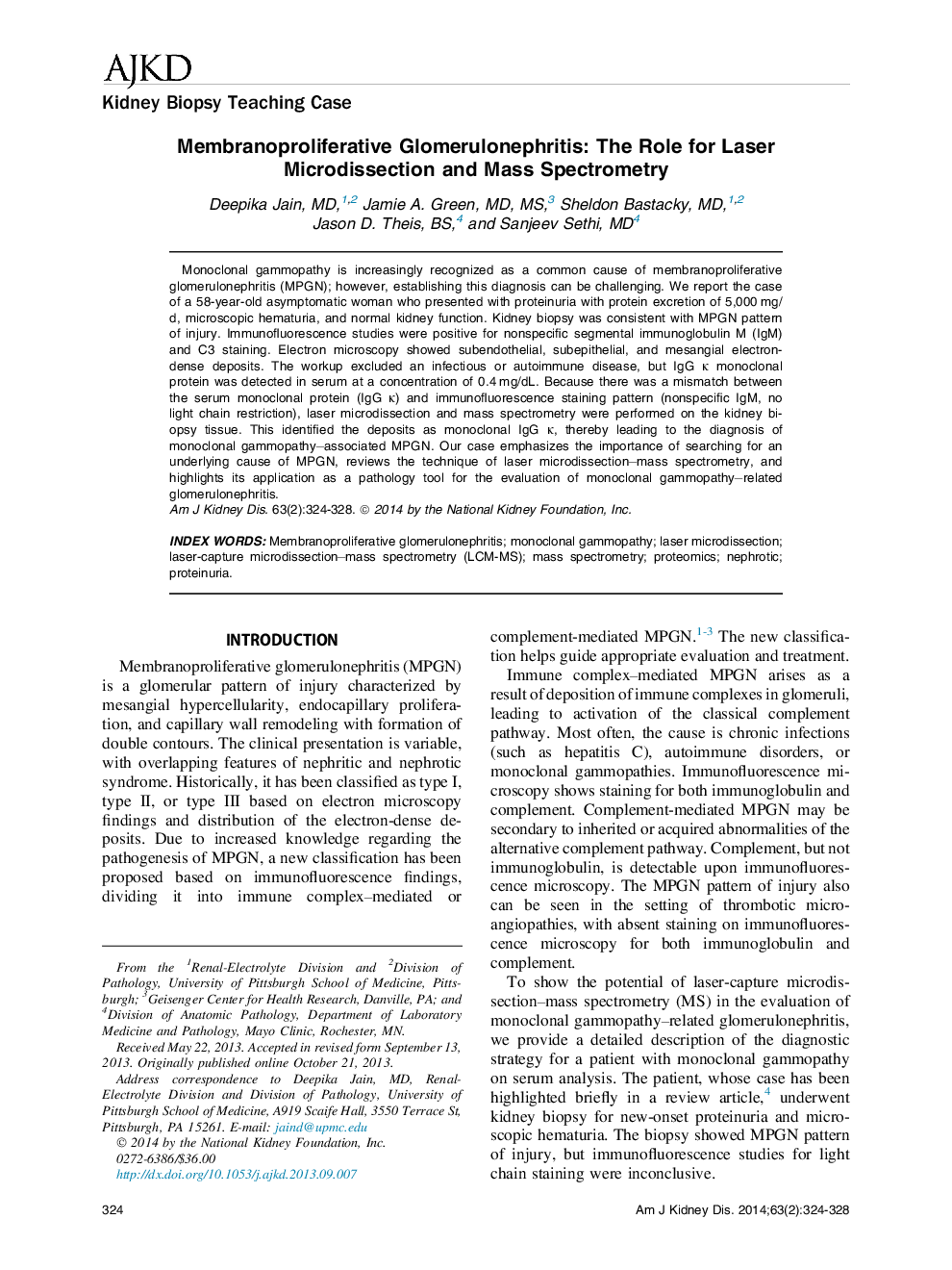| کد مقاله | کد نشریه | سال انتشار | مقاله انگلیسی | نسخه تمام متن |
|---|---|---|---|---|
| 3848034 | 1598271 | 2014 | 5 صفحه PDF | دانلود رایگان |
عنوان انگلیسی مقاله ISI
Membranoproliferative Glomerulonephritis: The Role for Laser Microdissection and Mass Spectrometry
ترجمه فارسی عنوان
گلومرولونفریت غشایی: نقش میکروسدی لیزر و اسپکترومتری جرمی
دانلود مقاله + سفارش ترجمه
دانلود مقاله ISI انگلیسی
رایگان برای ایرانیان
کلمات کلیدی
موضوعات مرتبط
علوم پزشکی و سلامت
پزشکی و دندانپزشکی
بیماریهای کلیوی
چکیده انگلیسی
Monoclonal gammopathy is increasingly recognized as a common cause of membranoproliferative glomerulonephritis (MPGN); however, establishing this diagnosis can be challenging. We report the case of a 58-year-old asymptomatic woman who presented with proteinuria with protein excretion of 5,000 mg/d, microscopic hematuria, and normal kidney function. Kidney biopsy was consistent with MPGN pattern of injury. Immunofluorescence studies were positive for nonspecific segmental immunoglobulin M (IgM) and C3 staining. Electron microscopy showed subendothelial, subepithelial, and mesangial electron-dense deposits. The workup excluded an infectious or autoimmune disease, but IgG κ monoclonal protein was detected in serum at a concentration of 0.4 mg/dL. Because there was a mismatch between the serum monoclonal protein (IgG κ) and immunofluorescence staining pattern (nonspecific IgM, no light chain restriction), laser microdissection and mass spectrometry were performed on the kidney biopsy tissue. This identified the deposits as monoclonal IgG κ, thereby leading to the diagnosis of monoclonal gammopathy-associated MPGN. Our case emphasizes the importance of searching for an underlying cause of MPGN, reviews the technique of laser microdissection-mass spectrometry, and highlights its application as a pathology tool for the evaluation of monoclonal gammopathy-related glomerulonephritis.
ناشر
Database: Elsevier - ScienceDirect (ساینس دایرکت)
Journal: American Journal of Kidney Diseases - Volume 63, Issue 2, February 2014, Pages 324-328
Journal: American Journal of Kidney Diseases - Volume 63, Issue 2, February 2014, Pages 324-328
نویسندگان
Deepika MD, Jamie A. MD, MS, Sheldon MD, Jason D. BS, Sanjeev MD,
